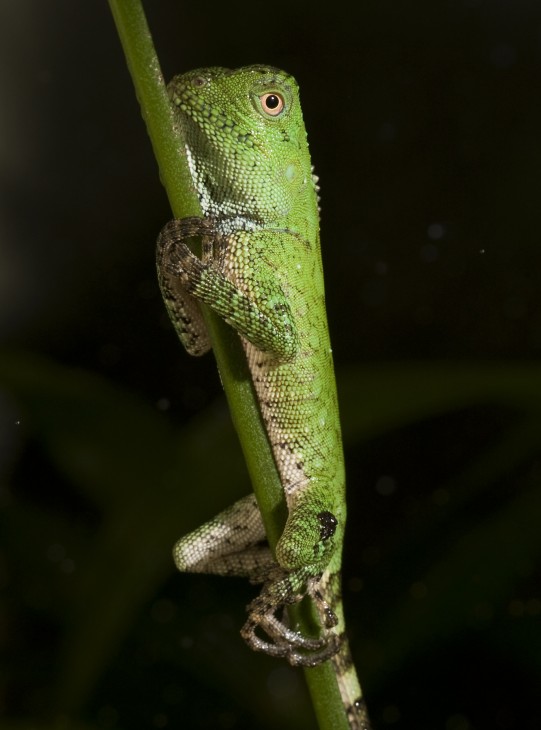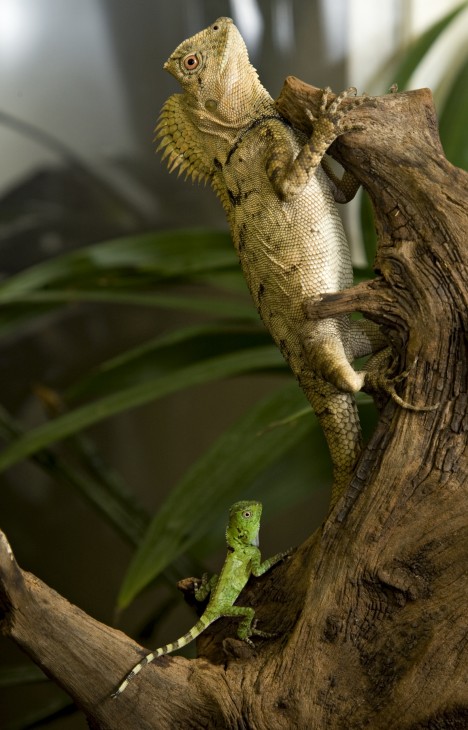The Smithsonian’s National Zoo’s Reptile Discovery Center welcomed into its collection four chameleon forest dragons (Gonyocephalus chamaeleontinus), also known as chameleon anglehead lizards, on Nov. 11. These young are the first of their kind to hatch at the Zoo. The parents arrived at the National Zoo’s Rock Creek facility in June 2009 and, while in quarantine, the female laid the four eggs. Because so little is known about this species, keepers are closely monitoring the hatchlings’ food intake and behavior in an off-exhibit enclosure. Visitors can view the parents inside the Reptile Discovery Center, near the building’s entrance.
A chameleon forest dragon’s scaly skin is a brilliant lime green when it hatches. As it matures, its color will either stay green or change to a brown-tan tone with dark brown markings. These colors mimic tree leaves and bark—an essential camouflage that helps this arboreal reptile hide from predators. Equipped with lean limbs and five curved, clawed digits on each of their feet, forest dragons easily maneuver through the trees of their native Indonesia and west Malaysia.
But their name is deceptive: chameleon forest dragons are neither chameleons nor dragons; rather, this species is a type of lizard called an agamid (pronounced “AG-uh-mid”). Some scientists speculate that, like a true chameleon, the forest dragon’s subtle color shifts help it blend into its surroundings, send social signals, and even reflect mood changes. Its short, triangular head resembles that of a mythical dragon, and spiky, leaf-shaped ridge plates adorn the crown of its head and extend the length of its back. Fully grown, this lizard can reach up to 12 inches in length, from nose to tip of the tail.







